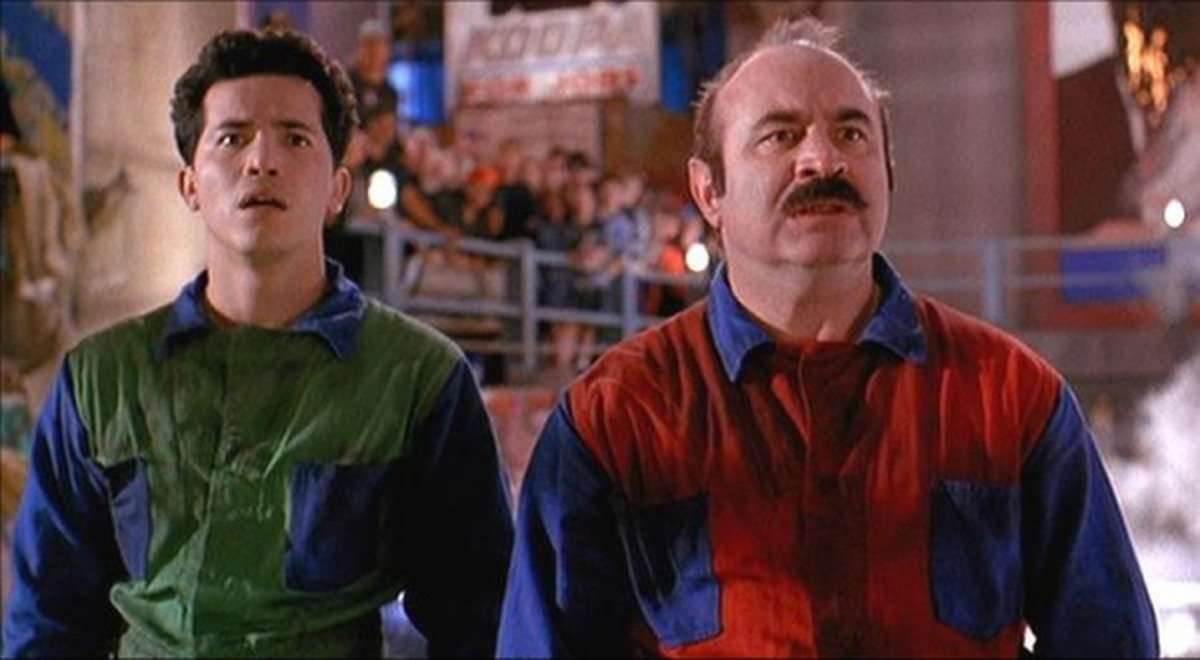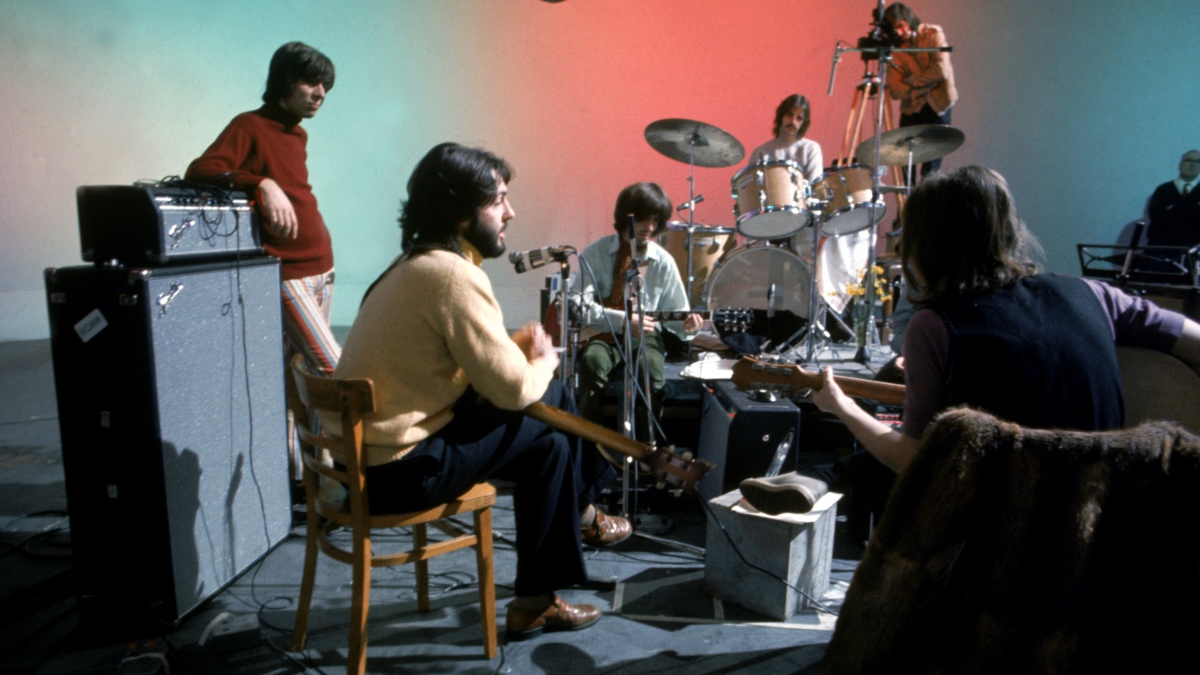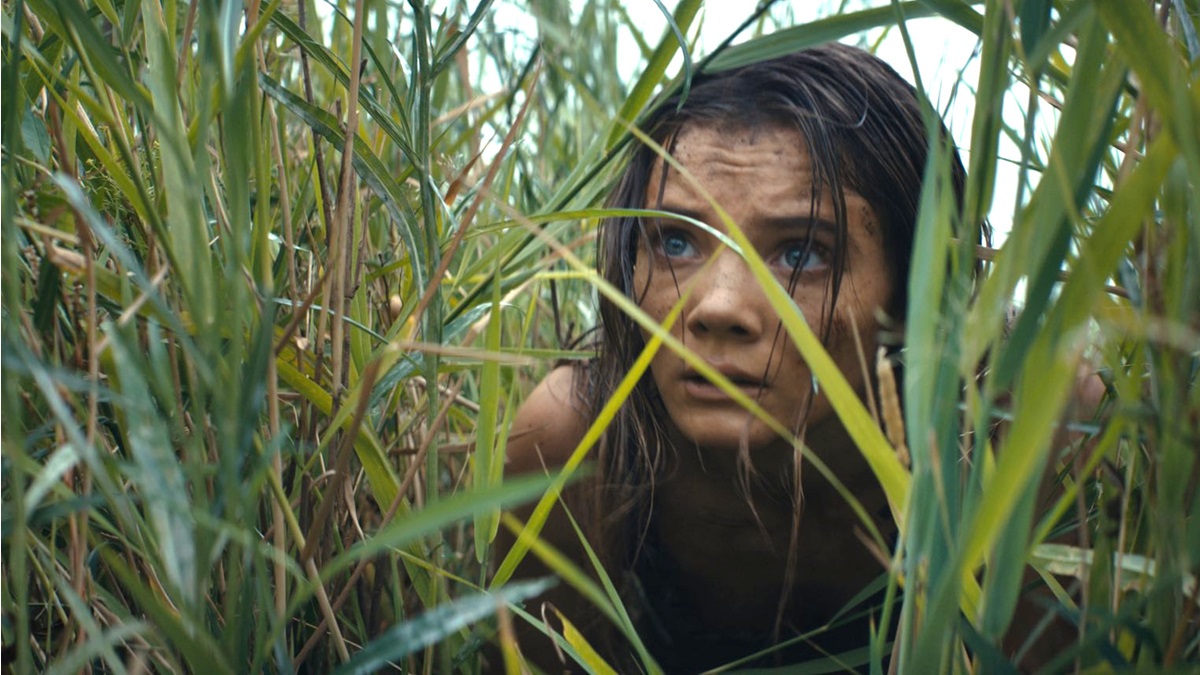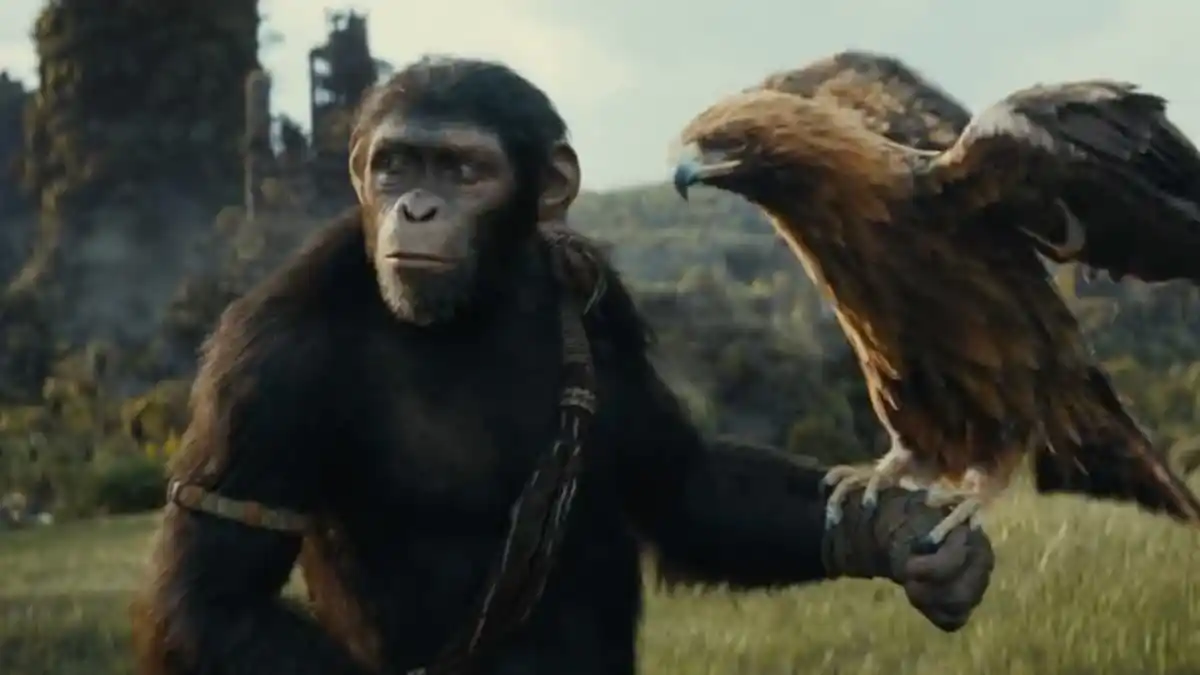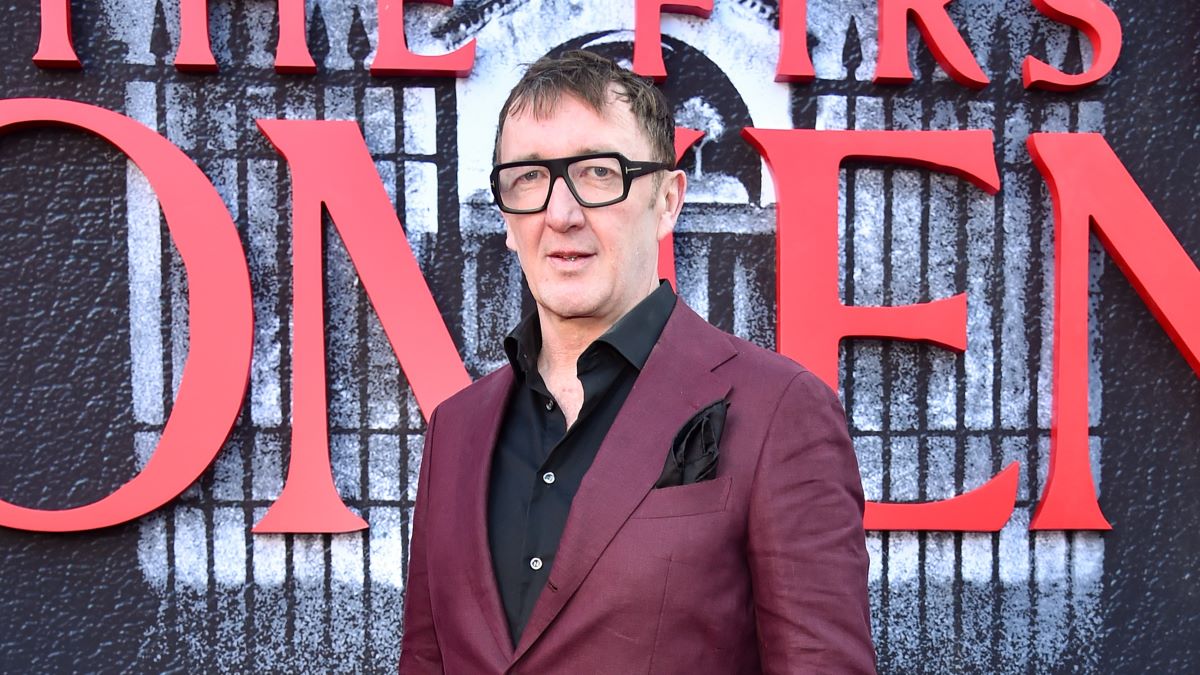The new Mario movie has been generating a load of pre-release hype. While many are excited about it, some fans are unsure if the franchise will work on the big screen. And it’s easy to see why, as the previous attempt to bring Mario and Luigi to the big screen, 1993’s Super Mario Bros., was a notorious flop. And the film is just as weird today as it was then, thanks to its grungy aesthetic and strange storyline.
But how did this film come to be, and what was it like behind the scenes? Thankfully, it is easy to learn about the movie’s development, as it might be one of the most looked-back-on and discussed films in cinema history.
So, grab a mushroom, as here is the complete history of Super Mario Bros.
What is Super Mario Bros.?
Landing on cinema screens in 1993, Super Mario Bros. follows Mario (played by Bob Hoskins) and Luigi (John Leguizamo), two down-on-their-luck plumbers in Brooklyn, New York. The brothers are struggling due to a mob-owned firm hoovering up all their business. However, when a girl gets kidnapped by two weird creatures, Mario and Luigi give chase, finding themselves in the parallel universe of Dinohattan.
How was Super Mario Bros. made, and how did it go wrong?
Part 1: Early development
Super Mario Bros. is the second movie based on Nintendo’s Mario franchise. The first movie was released only in Japan. Called Super Mario Bros.: Peach-Hime Kyushutsu Dai Sakusen!, this anime movie hit screens in 1986. It was a moderate success for what was, at the time, a new franchise.
The story of the 1990s movie starts with the initial pitch by Roland Joffé. Joffé was an acclaimed director, having been nominated for best director twice at both the Academy Awards and the Golden Globes. However, he got the nod for 1985’s The Killing Fields and 1987’s The Mission. The first was a drama about journalists covering the Khmer Rouge regime in Cambodia and the second was a period drama about Jesuit missionaries in 18th-century South America, meaning he wasn’t the obvious choice to make a movie about a plumber who eats mushrooms and jumps on turtles.
However, Roland Joffé and prolific producer Jake Eberts were able to get a meeting with Nintendo’s then-president Hiroshi Yamauchi. While there, they learned they were not the only creatives trying to get Nintendo to sell the red plumber’s cinematic rights. While Roland Joffé had only been able to raise $500,000 to finance the purchase of the rights, he had an ace up his sleeve. Joffé offered Nintendo all of the movie’s merchandise profits, a very unheard of move, especially as a movie based on Mario would likely be a merchandising juggernaut. On top of this, Joffé suggested that Nintendo would be able to get more creative control of the movie if they worked with a smaller studio like his. Eventually, Nintendo agreed and sold Joffé the rights for $2 million. Joffé is quoted as saying:
“They looked at the movie as some sort of strange creature, to see if it could walk or not.”
Of course, there was an issue, as Joffé says he told Hiroshi Wayauchi that his script and storyboard “won’t be the story, but it’ll be a story that contains some of these elements.” He told journalists he “was improvising” during the initial pitch, making it clear he didn’t have a solid idea of how to adapt the franchise.
Part 2: Getting the script
Once the rights were acquired, it was time to make the final script and get the team together. However, this quickly proved rocky, and many names were thrown around, only to not work out. And nowhere is this better seen than with the writers, as the film went through several of them.
First was Barry Morrow, the writer who had co-written the Rain Man screenplay. His draft was slightly more off-kilter than many other video game-to-movie adaptations. In fact, his script was heavily influenced by his work on Rain Man. In a 1992 article, the Los Angeles Times describes this script by saying:
“That first draft established Mario Mario as the elder brother, Luigi as the naive sibling. Together the blue-collar team formed a dysfunctional family relationship. Their story would be a prequel relating the adventure that led to the Mario brothers’ “super” video game status.”
However, this was rejected, with Fred Caruso, the movie’s co-producer, describing it as “more of a serious drama piece as opposed to a fun comedy.”
Next came Jim Jennewein and Tom S. Parker. In the book Lights, Camera, GAME OVER!: How Video Game Movies Get Made, Jennewein describes his script by saying: “Essentially what we did was what Shrek did.” Their version of the script subverted traditional fairytale and adventure tropes. But again, their script wasn’t popular with the studio, and they were let go.
Next came Parker Bennett and Terry Runté, who were told to try and balance comedy elements with a darker tone, with a film like Ghostbusters II being the aim. However, like the previous teams, they got kicked off the project. After this, Dick Clement and Ian La Frenais, the writers behind the legendary British comedy Porridge, came on to write the script. In an interview with Nintendo Life, Rocky Morton, the film’s eventual co-director, said:
“They were really sensitive to this story of the two brothers, and the love story between the two brothers, and the fact that they had lost their parents; Mario had to bring up Luigi on his own. And he became this mother figure to Luigi, and what Luigi really wanted from Mario was an elder brother figure — you know, a male model — and it frustrated him, and he disrespected Mario because of that. Throughout [that initial version], it was about how they reconciled that problem and how Luigi fell in love with Daisy along the way. So it was very much a personal, emotional story between the two of them.”
However, despite the script being liked by the directors, things were not good backstage. Despite the film being in the middle of pre-production, Roland Joffé and Jake Eberts believed it had strayed too far from its intended family audience. And the special effects budget was becoming too big and it risked bankrupting the project. This, plus the fact that the movie had been pre-sold to Disney to cover production costs, led to the producers hiring another set of new scriptwriters.
So, without consulting the directors, the producers brought on Ed Solomon, a man who had previously worked on Bill & Ted’s Excellent Adventure, and Ryan Rowe. These two wrote the script that we now know as the Super Mario Bros. movie. Rocky Morton described this sudden change by saying:
“The reaction from the studios was that the script that was written was too dark and too adult, and it should be rewritten — or dewritten, as I called it — to a lower level, adding stupid gags and making it more childlike, which is what happened.”
But at this point, a lot of scripts and sets were already being made for the film. On top of this, filming schedules had already been planned and organized. And all of these were built around the darker script, throwing the production into chaos.
“The new script was so different that it didn’t apply to a lot of the sets and the characters. Also, it was kind of flawed, it didn’t work because it was rushed so fast,” explained Morton, before adding: “All the actors had read and signed up for the original script, and this new script came in which was much more full of gags and sort of childlike, and they didn’t like it very much.” Of course, this led to a sour mood on set. However, Morton says he tried to hold it together.
He told Nintendo Life:
“So I had to sort of defend the script — and I didn’t like it either — and encourage them to carry on. And it was very awkward, and uneasy, and difficult.”
And this wasn’t the end of the script issues, as the film was constantly rewritten during production, with new scenes added daily. Interestingly, Fiona Shaw, the actress who played Lena, summed the whole thing up when she told the Los Angeles Times:
“The first script I got was witty. That was maybe 10 scripts ago. Now they’re talking about taking a bath with worms.”
Part 3: Finding the director and the actors
The screenplay was a microcosm of the film’s backstage issues, as every role went through several hands before ending up with the final cast — and these people often had vastly different styles or ideas for the movie. The director role was first given to Greg Beeman. But after his film Mom and Dad Save the World bombed, he was let go due to fears he might cause the Mario movie to flop.
Then it was offered to Harold Ramis, who turned it down. Ramis would tell the Associated Press in 2009 that “Roland Joffé wanted me to direct the Super Mario Bros. movie. I took the meeting because I loved the game,” before noting he was glad that he didn’t take the job.
Joffé described this period of the production process by saying: “We tried some various avenues that didn’t work, that came up too medieval or somehow wasn’t the right thing. I felt the project was taking a wrong turn.” However, Joffé was inspired by Max Headroom and decided to seek out its creators, Rocky Morton and Annabel Jankel, and talk them into directing the picture. Once they agreed, the film’s concept started to take shape and things seemed to be moving.
Of course, a film can’t be a film without actors. And several names were thrown around and approached to take the lead roles in the movie. In fact, it reads like a who’s who of early 1990s talent. Many actors were considered for Mario. Dustin Hoffman was considered and was apparently very interested in the role, but Nintendo of America president Minoru Arakawa apparently shot down the idea, saying Hoffman would not “be right for the part” but offered no further explanation for his reasoning.
Famously, Danny DeVito was approached for the role but turned it down. DeVito’s reason for saying no is debated, with some sources saying he wanted to focus on his directing career. However, Rocky Morton says it was “just based on availability and agents.”
Tom Hanks was offered the role for $5 million and was ready to sign on. However, at the last minute, the producers started to have second thoughts as they were worried “he couldn’t handle a dramatic role,” and that he lacked the “it” factor needed. The King Koopa role was also bounced around a lot, with both Arnold Schwarzenegger and Michael Keaton being considered for the part.
Eventually, the core cast we know today was settled on. Bob Hoskins says he was picked to play Mario because “I’ve got a mustache. I worked as a plumber’s apprentice for about three weeks and set the plumber’s boots on fire with a blowtorch.”
Rocky Morton said Leguizamo was picked because “of his comic timing, his ability to be real but also be funny at the same time.” Leguizamo described his decision to do the movie by joking:
“It was my revenge for all those Italians who play Latins all the time. I’ll embarrass them just the way they’ve embarrassed me.”
Fascinatingly, the role of Toad was taken by Mojo Nixon. In an interview, Mojo said he was picked after the first choice, murder-ballad legend Tom Waits, turned the part down.
He joked that his friend and member of the casting team, Lisa Mae Fincannon, told him: “They said we gotta have Tom Waits for this role, but he wants too much money.” And he said Fincannon told the people behind the movie: “Well I can get you a third-rate Tom Waits — for half-price!” And this really sums up the whole casting process, with every role given to the third or fourth choice.
Part 4: Filming the movie
The chaos didn’t fade during filming. In fact, reports from the time show the film’s production was a mess plagued with issues of all forms. This led to a tense atmosphere on set. According to those reports, the cast started using the term “Rockabell” as a derogatory name for co-directors Rocky Morton and Annabel Jankel and frequently referred to the whole production as “Rocky and Annabel, the Flying Squirrel Show.”
Firstly, the film was constantly rewritten during production. In fact, there were so many rewrites that they often had to be color-coded to make them easy to follow. Of course, the cast was unhappy with this and frequently complained to the press, with a Los Angeles Times article from 1992 about the mood on the set being one of the most damning takedowns of the film. This article was so bad that it caused Rocky Morton massive career issues. He told Wired, “CAA dumped us immediately,” and added, “we couldn’t get an agent. No scripts would come. We couldn’t get meetings. Literally, the phones stopped ringing. It all was because of that front page article.”
When the Times asked Dennis Hopper about filming the movie, he said: “The script had probably been rewritten five or six times by the time I arrived here. I don’t really bother with it anymore. I just go in and do it scene by scene. I figure it’s not going to hurt my character.”
In the same interview, Bob Hoskins is quoted as saying: “All these rewrites get frustrating so I don’t do too much research. The trick is: Don’t take the job too seriously, turn up and do your day’s work. That’s all.” Meaning that Hoskins was not only the star but also the inventor of Quiet Quitting.
Leguizamo was also quoted in the Los Angeles Times article, complaining: “Every day’s a new page. It’s like waiting for the news. What the hell happened yesterday? And there it is: All new, all live. 24 hours: Ding, ding, ding.”
And it wasn’t just the writers that were changing the script. Several actors frequently demanded rewrites or went off-script during filming. Most famously, the actors playing Iggy and Spike, Fisher Stevens and Richard Edson, pushed hard for their characters to get a different outcome. Famously, the pair even wrote a rap scene that was filmed but eventually cut, despite being heavily featured in the pre-release advertising. In an interview, Richard Edson said, “Because we had so much freedom and I guess ‘we’ — Fisher and I as well as everybody else on the cast — believed the movie needed as much improvement as possible. We came up with that idea which was kind of the introduction to the nightclub scene.”
However, it should be noted that at the time, Rocky Morton publicly denied the rewrites were excessive, telling the Los Angeles Times that: “Doesn’t that always happen?” This was backed up at the time by co-producer Fred Caruso, who said, “It’s not unusual to go through many script changes and especially with this particular film because this comes from a video game that has no story. Everything we’re doing is made up and it comes from the flow of what we’re shooting. All the games have are the characters.” So despite the issues, they were publicly trying to salvage the film.
Of course, these rewrites and additions frequently caused issues with continuity, especially as the film was already shooting out of order, leading to loads of downtime while sets were fixed, changed, or reset. Rocky Morton told Sci-Fi Now:
“One day, we’d be on set and the actor would pick up the crystal but it wouldn’t work with the continuity. Someone would say, ‘You can’t pick that crystal up because we’re shooting out of sequence. If you look on page 24 the crystal is actually here.’ And we’d think, oh god, yeah, it’s a mistake! So someone had to say to all the actors, ‘Okay, we’re going to relight the set but it will take a while. Go back to the trailers while we relight the set.’ It was like that every day.”
And some of the sets were not even ready, forcing everyone to change on the fly. Morton broke down a sequence with Dennis Hopper and noted, “we had to shoot on one of the sets that wasn’t ready yet, and we had to shoot on a long lens. I had to position Dennis in a certain way because if I shot off, I would be shooting off the set.”
But it wasn’t just the script that was changing. Many who worked on the film say that Morton and Jankel changed their minds frequently. Prop designer Simon Murton described his time on set by saying: “They have very, very fertile minds but they’re constantly changing into newer, better ideas. So I rush things to completion before they change again.”
This isn’t the only criticism of Morton and Jankel. In an interview with the AV club, Dennis Hopper describes his experiences filming the movie by saying:
It was a nightmare, very honestly, that movie. It was a husband-and-wife directing team who were both control freaks and wouldn’t talk before they made decisions. Anyway, I was supposed to go down there for five weeks, and I was there for 17. It was so over budget. But I bought a couple buildings down there in Wilmington, NC, and I started painting. I made an art studio out of one.
Hopper wasn’t alone. In a 2007 interview with The Guardian, Bob Hoskins was asked what was the worst thing he ever did, and he replied:
The worst thing I ever did? Super Mario Brothers. It was a fuckin’ nightmare. The whole experience was a nightmare. It had a husband-and-wife team directing, whose arrogance had been mistaken for talent. After so many weeks their own agent told them to get off the set! Fuckin’ nightmare. Fuckin’ idiots.”
What does Super Mario Bros. teach us?
The interviews with those who worked on the film have a recurring theme. This theme is that there were simply too many cooks in the kitchen. The film had changed so many times for so many reasons that no one was happy, and everyone was trying to alter the movie to fit their vision, meaning it turned into something that no one wanted.
In fact, looking back now, you can see those sparks of inspiration in the final film. There are moments and visual elements that suggest what could have been if the management, cast, and crew could all settle on one idea and push it. There is a universe where Super Mario Bros. is a classic film. One loved by videogame fans and moviegoers alike. However, that isn’t our world. The movie we got is a strange cultural curiosity that, despite its issues, is weirdly endearing.
However, the whole thing is best summed up by Rocky Morton. When asked what his abiding memory from working on this movie was, he simply answered: “Humiliation.”

